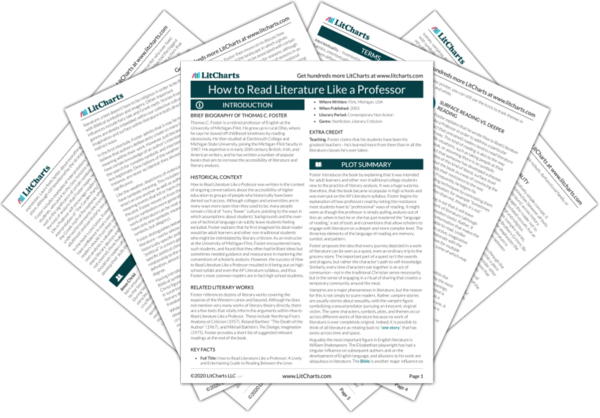Intertextuality Quotes in How to Read Literature Like a Professor
Memory. Symbol. Pattern. These are the three items that, more than any other, separate the professorial reader from the rest of the crowd.
There is only one story. Ever. One. It's always been going on and it's everywhere around us and every story you've ever read or heard or watched is part of it.
Don't bother looking for the originals, though. You can't find the archetype, just as you can't find the pure myths. What we have, even in our earliest recorded literature, are variants, embellishments, versions, what Frye called "displacement" of the myth.
We—as readers or writers, tellers or listeners—understand each other, we share knowledge of the structures of our myths, we comprehend the logic of symbols, largely because we have access to the same swirl of story.

















